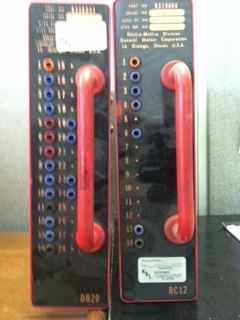Lots of very different engine makes use the same prime mover. Think of how many very different locomotives use the 16-cylinder EMD 645E3: every generation of F40PH, every GP40 and GP40-2 freight and passenger variant, every SD40 variant, all kinds of Euro makes. That doesn't mean the individual makes are so similar they can be all be converted to each other on a whim. It's easier to downrate a GP40 into a 12-cylinder 645-bearing GP38 or vice versa because of the way the "General Purpose" was designed for that kind of customization leeway than it is to turn the passenger-specialized F40 packaging into a freight engine. Amtrak found that out the hard way with its misfit SDP40's not being specialized enough for passenger service from their freight lineage; when they dumped those engines for parts for more F40's the only thing salvaged was the 645 prime mover itself for making that batch of F40PHR's. And when MPI created the MP32PH-Q out of former GP40 carbodies, the 645E3 prime mover was the only legacy component retained inside that carbody. Everything else is stock MPXpress components, putting it in the same family as an MP36PH-3 and MP40PH-3; the Geep lineage was completely erased despite the superficial resemblance and same prime mover heartbeat.
Same is true for the long list GE Dash 8's, especially with that being such a long-lived engine platform. Amtrak's P328-WH isn't a Genesis or all that portable with a Genesis in rebuild, despite it originally being a testing platform for tech that ultimately made it into the Genesis. Conversely, when the P42's hit the aftermarket it probably will be possible to rebuild them as "P32AC's" sans the "DM" capability since the 32AC-DM's alternator and AC traction motors are still in-production today and used in the MPI HSP-46. But whatever updated microprocessor controls and new emissions controls get installed would just hew a lot more conservatively to the Gennie baseline without changing them into something radically different. The HSP's are completely different packaging, and are unreliable in-part because they went very far out on a limb with custom electronics. A P42 rebuilt to AC traction would still be a Gennie through and through, not an HSP (thank god). Electronics and systems integration is more what distinguishes loco makes than power components, especially in the 21st century where making good rolling stock is almost more about software programming than hardware selection.
Same is true for the long list GE Dash 8's, especially with that being such a long-lived engine platform. Amtrak's P328-WH isn't a Genesis or all that portable with a Genesis in rebuild, despite it originally being a testing platform for tech that ultimately made it into the Genesis. Conversely, when the P42's hit the aftermarket it probably will be possible to rebuild them as "P32AC's" sans the "DM" capability since the 32AC-DM's alternator and AC traction motors are still in-production today and used in the MPI HSP-46. But whatever updated microprocessor controls and new emissions controls get installed would just hew a lot more conservatively to the Gennie baseline without changing them into something radically different. The HSP's are completely different packaging, and are unreliable in-part because they went very far out on a limb with custom electronics. A P42 rebuilt to AC traction would still be a Gennie through and through, not an HSP (thank god). Electronics and systems integration is more what distinguishes loco makes than power components, especially in the 21st century where making good rolling stock is almost more about software programming than hardware selection.
